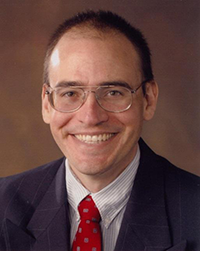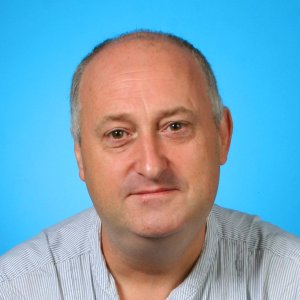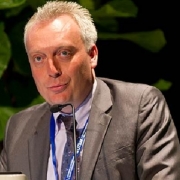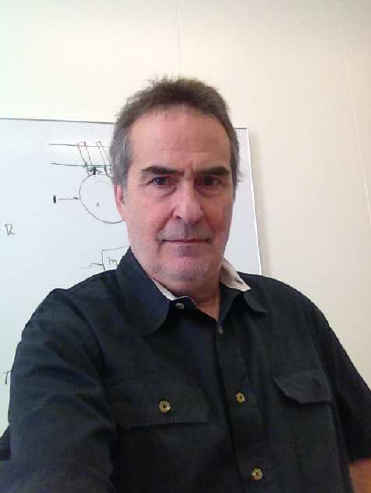
|
|
|
Invited Speakers
Richard D. Braatz is the Edwin R. Gilliland Professor at the Massachusetts Institute of Technology (MIT), where he does research in control theory and its application to biomedical, pharmaceutical, energy, and nanotechnology systems. He received MS and PhD degrees from the California Institute of Technology and was the Millennium Chair and Professor at the University of Illinois at Urbana-Champaign and a Visiting Scholar at Harvard University before moving to MIT. He has consulted or collaborated with more than 20 companies including IBM, United Technologies Corporation, Novartis, and Abbott Laboratories. His research has been recognized by the Donald P. Eckman Award from the American Automatic Control Council, the Curtis W. McGraw Research Award from the Engineering Research Council, the Antonio Ruberti Young Researcher Prize, and the IEEE Control Systems Society Transition to Practice Award. He is a Fellow of IEEE and IFAC and an IEEE Distinguished Lecturer.
Title: Perspectives on Fault Detection and Identification in Industrial Systems By Kristen Severson, Paphonwit Chaiwatanodom, and Richard D. Braatz Abstract
Fault detection and identification (FDI) is an important part of modern control systems. This paper presents a survey of the advances of the field in two parts: background on widely accepted concepts and challenges and opportunities for future work. The background section walks through the process monitoring loop and introduces different techniques that can be used in each step. The challenges and opportunities section reviews more recent work in the field. When looking to the future of FDI, advances are likely to come from combining different methods to exploit the strengths of the various techniques while minimizing their weaknesses.
Keith Worden is a Professor in the Dynamics Research Group in the Department of Mechanical Engineering at the University of Sheffield. In the dim and distant past, he received a BSc in Theoretical Physics from the University or York, eventually followed by a PhD in Mechanical Engineering from Heriot-Watt University. His primary research interests are in the application of techniques from machine learning and probability theory to problems in structural dynamics.
Title: Structural Health Monitoring: from Structures to Systems-of-Systems
By I.Antoniadou, N.Dervilis, E.Papatheou and K.Worden
Abstract
Almost all engineering disciplines face the problem of damage detection and assessment. Although the terminology might change between disciplines, the problems faced, and the methods of solution, show great commonality. The object of this paper is to discuss how Structural Health Monitoring (SHM) is carried out in the context of aerospace and civil structural monitoring and to draw parallels with how damage detection is conducted within the electrical, control and process engineering communities. A four-stage methodology for SHM, based on machine learning is discussed. The different levels of diagnostic information available depend on the type of data available for learning and this is also discussed. Detection alone can be carried out using normal condition data only and this is achieved using supervised learning where detection thresholds are critical. If damage state data are available, supervised learning can be applied and more diagnostic information becomes available. The various concepts are discussed in terms of a number of case studies drawn from wind turbine monitoring programmes; this allows the illustration of both SHM methods and machine condition monitoring methods. The possibility of moving towards a population-based approach to SHM applicable to systems-of-systems is outlined.

Alessandro Giua is professor of Automatic Control at the Department of Electrical and Electronic Engineering (DIEE) of the University of Cagliari, Italy and at the Information and Systems Sciences Laboratory (LSIS) of Aix-Marseille University, France. He received a Ph.D. degree in computer and systems engineering from Rensselaer Polytechnic Institute, Troy, New York in 1992. He has also held visiting positions in several institutions worldwide, including Xidian University, Xi’an, China.
His research interests include discrete event systems, hybrid systems, networked control systems, Petri nets and failure diagnosis. On these topics he has published extensively and has managed several research projects.
He is the editor in chief of the IFAC journal Nonlinear Analysis: Hybrid Systems and was the chair of the IFAC Technical Committee 1.3 on Discrete Event and Hybrid Systems from 2008 to 2014. Currently he is serving in the IEEE Control Systems Society as member of the Board of Governors (2013-2015).
Title: Diagnosis and diagnosability of discrete event systems using Petri nets
Fault diagnosis in dynamic systems is a subject that has received a lot of attention in the past decades: the objective is that of understanding if a system is affected by a fault, and if so to identify the fault. In the context of discrete event systems faults are modeled by unobservable (or undistinguishable) events whose firing cannot be directly detected but must be reconstructed on the basis of the observed evolution. This implies that the approaches for diagnosis are strictly related to the problems of designing an observer for state and event sequence estimation. Diagnosability analysis aims to determine if a system is diagnosable, i.e., if the occurrence of fault can be identified in a finite number of steps. Both diagnosis and diagnosability have been mostly studied in the context of finite state automata, and the complexity of solving these problems is often unmanageable due to the state space explosion. This talk focus on a particular class of discrete event models, Petri nets. The goal is to show that the observer design can be efficiently addressed using Petri net models and can naturally be extended to diagnosis and diagnosability. 
Daniel HISSEL (M’03 - SM’04) obtained an electrical engineering degree from the Ecole Nationale Supérieure d’Ingénieurs Electriciens de Grenoble in 1994. Then, he obtained a PhD from the Institut National Polytechnique de Toulouse in 1998. From 1999 to 2000, he worked for ALSTOM Transport in Tarbes (France) where he was system engineer on electrical and fuel cell buses projects. From 2000 to 2006, he has been an Associate Professor at the University of TechnologyBelfort. From 2006 to 2008, he has been a Full Professor at the University of Franche-Comté and Head of the “Fuel Cell Systems” Research Team of the Laboratory of Electrical Engineering and Systems. In 2008, he joined the FEMTO-ST (CNRS) Institute and became Head of the “Energy systems modelling” research team. Since 2012, he is the Head of the “Hybrid & Fuel Cell Systems” research team in the same institute and also the Director of the FCLAB (Fuel Cell Lab) Research Federation (CNRS), devoted to Fuel Cell Systems Research (over 90 researchers). His main research activities are concerning fuel cell systems dedicated to automotive and stationary applications, modelling, non linear control and energy optimization of these systems and fuel cell system diagnostic / prognostic. He was Associate Editor of IEEE Transactions on Industrial Electronics from 2004 to 2012 and is currently Associate Editor of ASME Fuel Cell Science and Technology. He is also the President of the IEEE VTS French Chapter and member of the advisory board of the MEGEVH network, the French national network on EV and HEV. He has published more than 300 scientific papers in peer-reviewed international journal and/or international conferences.
Title: Diagnostic & health management of fuel cell systems – a state of the art
Continuous depletion of the crude oil and gradual increase in the oil price have emphasized the need of a suitable alternative to our century-old oil-based economy. A clean and efficient power supply device based on a renewable energy source has to be available to face this issue. Among the different technological alternatives, fuel cell power generation becomes a more and more interesting and promising solution for both automotive industry and stationary power plants. However, many technological hurdles have still to be overcome before seeing the development of industrial and competitive products in these fields. Among them, one of the major issues to be solved is their insufficient reliability and durability for stationary and transport applications. To reach this aim, efficient diagnostic and state-of-health estimation methodologies should be available, able also to operate real-time and with limited number of additional physical sensors. This presentation will be divided in three main parts:

Michel Comes is the Airbus Chief Engineer for the R&T programme since 2011. He started his career 36 years ago, at the moment of the digitalization of the aircraft systems, when everybody thought: ‘it is easy, it is just software’. His first position was to develop the Flight management system of the new Airbus A310 aircraft, then leading the team for the 2nd version of the FMS on the A320 at the moment when the maintenance of the systems could be centralized thanks to the digital technologies. In 1990, he took the position of head of systems in the ‘département Séries’ in Aerospatiale to secure the technical support of the A310, but also to develop the product improvements that all Aircraft customer expect from their airframer. During that period he has been technically in charge of a VIP A340 conversion. In 1996, he joined the Large Aircraft Division put in place by Airbus Industries and its partners to prepare the launch of the A3XX, then called A380. This was the period of selection and maturation of all technologies which have been the source of the technical success of the A380 with the very careful listening of the first customers. He became the system architect for the A380 chief engineer until certification and entry into service; then he took the mission of Chief Engineer for the A380 for the French part. Since 2011, he is leading the Airbus R&T projects as Chief engineer, defining the R&T portfolio strategy, and ensuring the maturation of the innovation until handover to the Airbus programmes. Title: Future challenges for civil aircraft systems: how to combine safety, simplicity, virtuality and agility ?
Air transport is a major contributor to global economic prosperity and is the corner stone of global commerce with a myriad of economic and societal benefits. This expanding sector is trying to respond to the increased passenger demand - doubling every 15 years - by offering the latest innovations that meet evolving passenger trends and environmental demands. In this context, some of the future challenges aircraft manufacturers will have to face include the system complexity reduction while keeping the same high-level safety standards. Fault detection, diagnosis and prognostic are also key points to address to be compliant with stringent airworthiness regulations while improving the aircraft performances and environmental footprint. Efficient system architecture has also to be designed in this context and it could be promising to consider distributed architecture. Finally, in order to decrease the development cycle, attention must be paid to the virtual testing. All these key elements, completed by some additional ones, will be broached and detailed during the presentation, with a strong industrial point of view, allowing the academia to better understand how to bridge the gap between basic research levels and engineering needs. 
Donald Margolis received his BS in Mechanical Engineering in 1967 from Virginia Polytechnic Institute and State University. He did his graduate work at MIT, receiving an MS, ME, and PhD in Mechanical Engineering in 1972. Upon graduation from MIT, Dr. Margolis joined the faculty of Mechanical Engineering at the University of California at Davis where he is currently Professor of Mechanical Engineering. Professor Margolis is an expert in the area of physical system modeling and control of engineering systems. He is a principal developer of the bond graph modeling method for interacting multi-energy domain systems. These have come to be called "mechatronic" systems. He is co-author of the most comprehensive text in this area of modeling, titled System Dynamics: Modeling, Simulation, and Control of Mechatronic Systems, published by Wiley and sons of NY. This book is in its 5th edition. He is also co-author of the text Engineering Applications of Dynamics. This book is also published by Wiley and sons. Professor Margolis has done research and development in the general area of physical system understanding with particular application to vibration control and vehicle dynamics and control. He has published over 150 articles in these areas and holds several patents for devices that required in depth physical system understanding for their invention. Professor Margolis is also the Director of the Hyundai Center of Excellence in Vehicle System Dynamics and Control. Professor Margolis is a teacher, researcher, and consultant to industry and national laboratories throughout the US, Asia, and Europe.
Title: The Importance of Physical System Modeling to Industry: System Models that could have Prevented some Costly Mistakes In order to develop new concepts into prototypes and ultimately into products, physical system modeling is virtually a necessity. At the concept stage, low order models are needed to understand the interactive dynamics of complex systems, and, as development proceeds into prototyping and manufacture, more sophisticated models may be needed to size components, determine fatigue life, plus more.As the product becomes more and more defined, the modeling depends more and more on special purpose software packages that evaluate stress and strain, magnetic circuit design, fluid flow fields, etc. These packages require that the product is near final form, as the input files for these programs require details about the system that would not be known in the concept development stage. The modeling discussed in this paper is specifically directed to the concept development of mechatronic systems. These systems typically involve multiple energy domains where electromechanical, -pneumatic, and -hydraulic devices are involved. Since the device or system is not well defined at this stage, the modeling must be handled by the inventors using physical principles, and assembling the various pieces of the model into an overall dynamic model that can be simulated. Bond graphs are particularly well suited for concept development of multi-energy domain systems. This is demonstrated here using several examples where modeling at an early stage of development would have avoided some very costly mistakes. |
| Online user: 1 | eRSS Feed |

|






